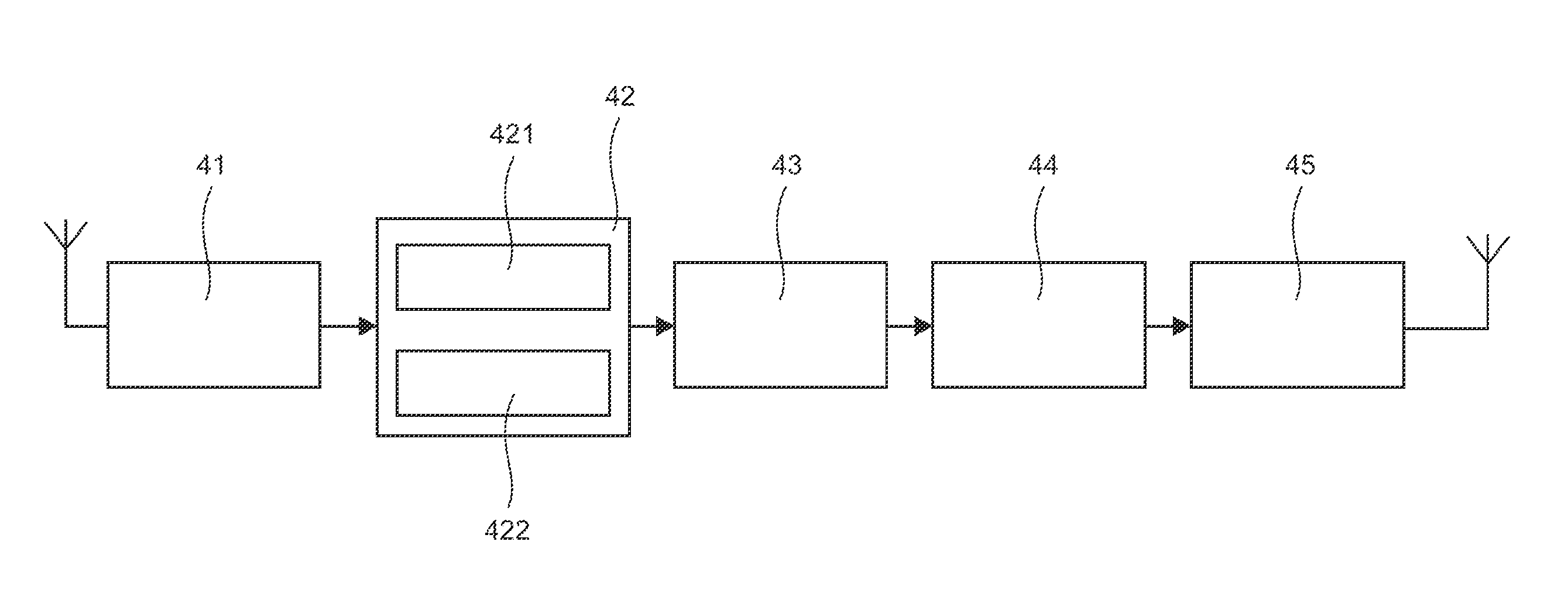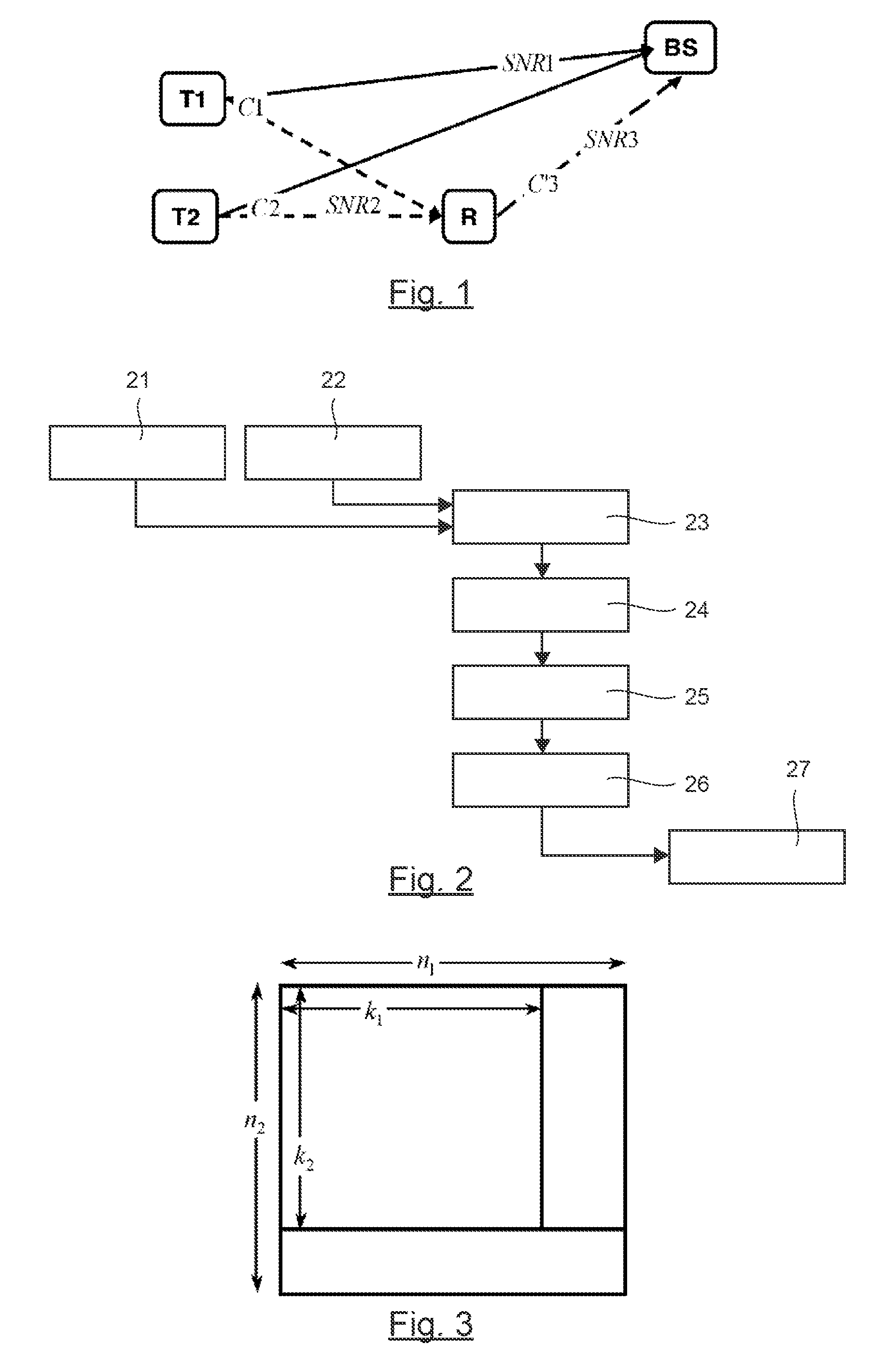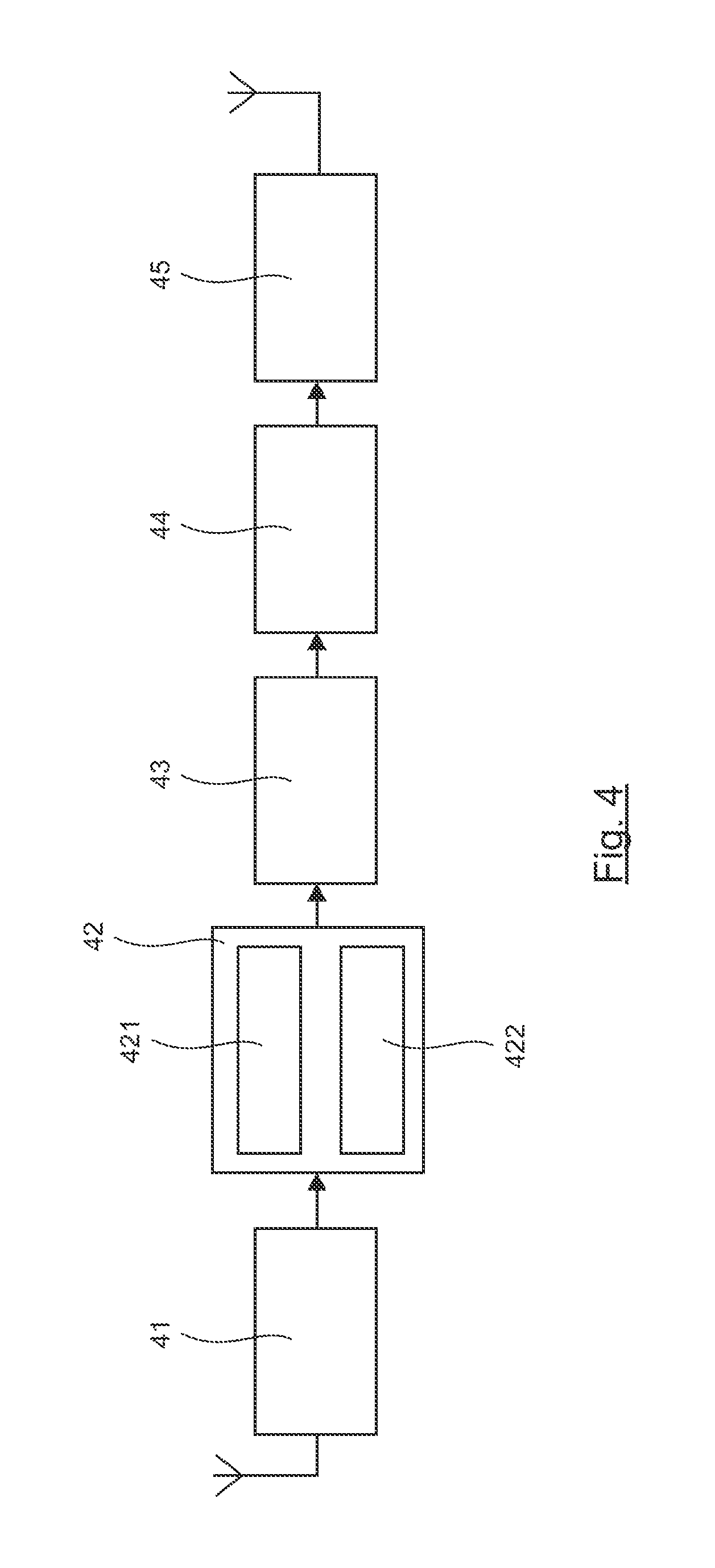Method for transmitting a digital signal between at least two transmitters and at least one receiver, using at least one relay, and corresponding program product and relay device
a digital signal and relay technology, applied in the direction of digital transmission, code conversion, code conversion, etc., can solve the problems of increasing transmission time, little compatibility with real-time applications, and relative mediocrity of transmission reliability, so as to reduce the number of relay errors, reduce the number of mean square errors, and improve efficiency
- Summary
- Abstract
- Description
- Claims
- Application Information
AI Technical Summary
Benefits of technology
Problems solved by technology
Method used
Image
Examples
first embodiment
2. First Embodiment
[0078]2.1 Principle
[0079]In the case of a simple transmission system illustrated by FIG. 1, implementing two transmitters T1, T2 one relay R and one receiver BS (in the example implemented, a base station), the relay receives C1 and C2 and delivers the sequence C′3.
[0080]The base station therefore has available three code words or sequences C1, C2 and C′3, which it can decode according to an iterative decoding method.
[0081]The method implemented is illustrated in simplified form in FIG. 2.
[0082]Each transmitter sends (21, 22) one code word C1, C2. Depending on the embodiments, it is of course possible to make the transmitters send several code words simultaneously, if necessary at different bit rates and / or variably in time. Again, in this case, an adapted signaling is preferably implemented.
[0083]The relay receives (23) these code words and applies a bit-by-bit thresholding of the observations to give C′1 and C′2. It can be noted that C′1 and C′2 are not inevitab...
second embodiment
3. Second Embodiment
[0114]FIG. 5 illustrates an example of implementation of an embodiment of the invention with four transmitters, one relay and one receiver. FIG. 6A to 6D present the results of simulation obtained for a system of this kind
[0115]We therefore consider the case where four terminals T1, T2, T3 and T4 are sending to a base station BS (receiver as understood in the claims) using a relay R. The terminals send code words of a BCH code (64, 51, 6) and the relay R makes a linear combination of the four received code words C1 to C4, and sends a fifth code word C′5 in the same way as indicated here above.
[0116]The base station performs an iterative decoding of the corresponding product code (BCH (64, 51, 6)*parity (5, 4, 2)), which has a minimum distance of 12.
[0117]The signal-to-noise ration SNRi is defined as the energy per bit received (data bit or parity bit) divided by the power spectrum of the single sideband noise. SNR1 corresponds to the link between a terminal and t...
PUM
 Login to View More
Login to View More Abstract
Description
Claims
Application Information
 Login to View More
Login to View More - R&D
- Intellectual Property
- Life Sciences
- Materials
- Tech Scout
- Unparalleled Data Quality
- Higher Quality Content
- 60% Fewer Hallucinations
Browse by: Latest US Patents, China's latest patents, Technical Efficacy Thesaurus, Application Domain, Technology Topic, Popular Technical Reports.
© 2025 PatSnap. All rights reserved.Legal|Privacy policy|Modern Slavery Act Transparency Statement|Sitemap|About US| Contact US: help@patsnap.com



